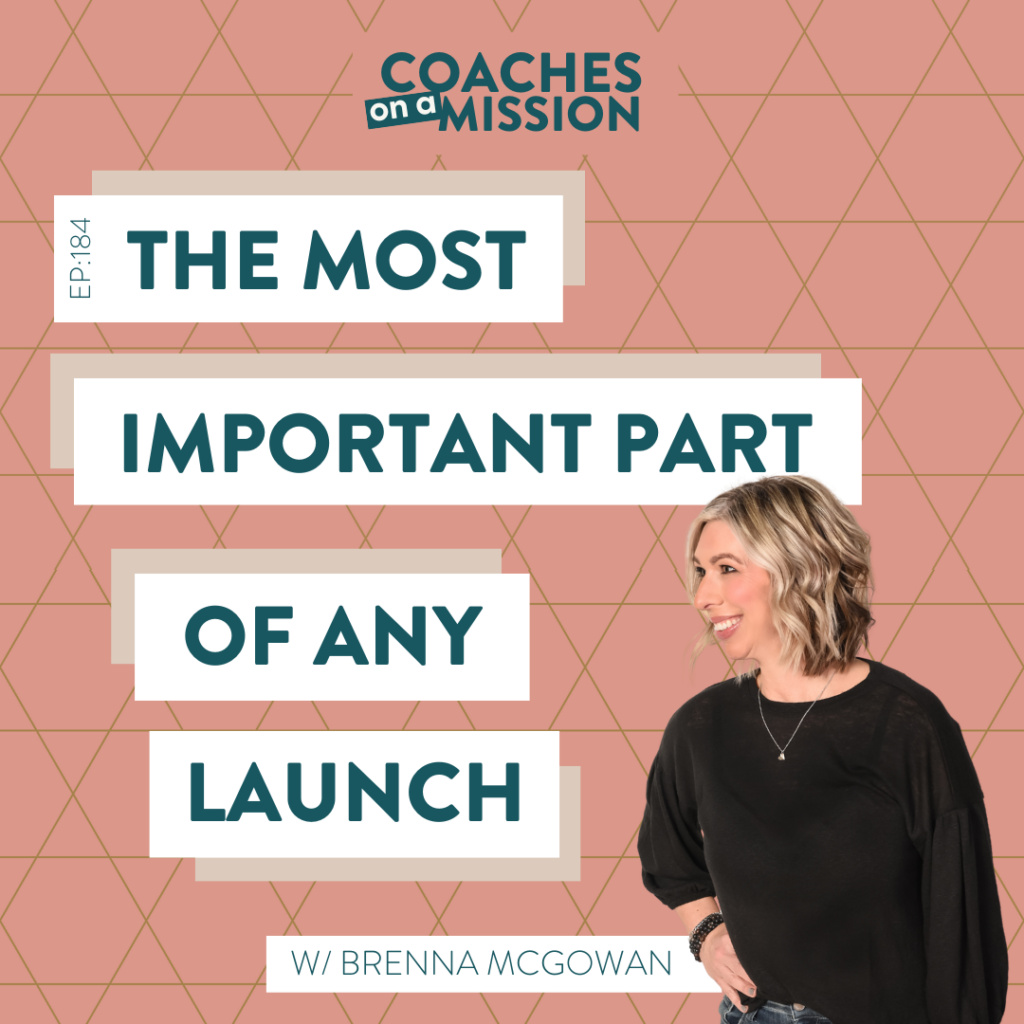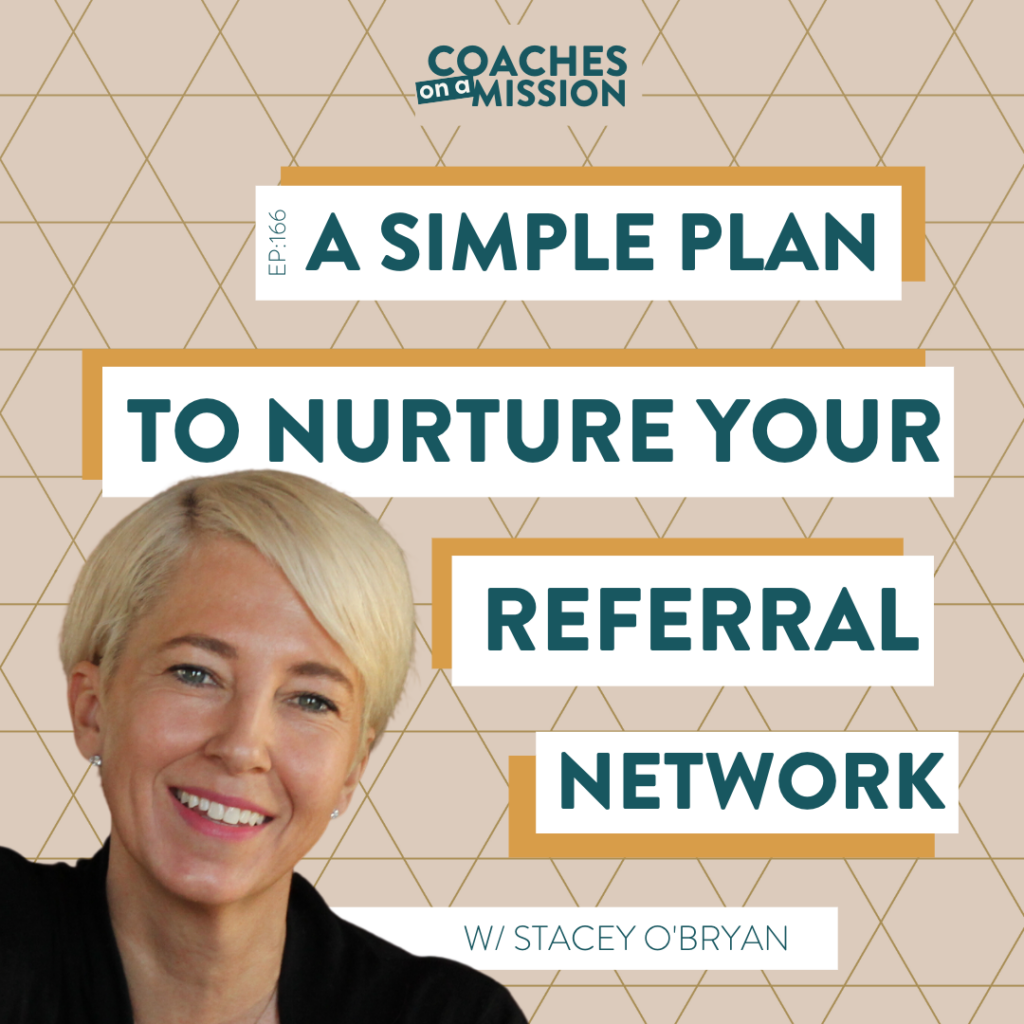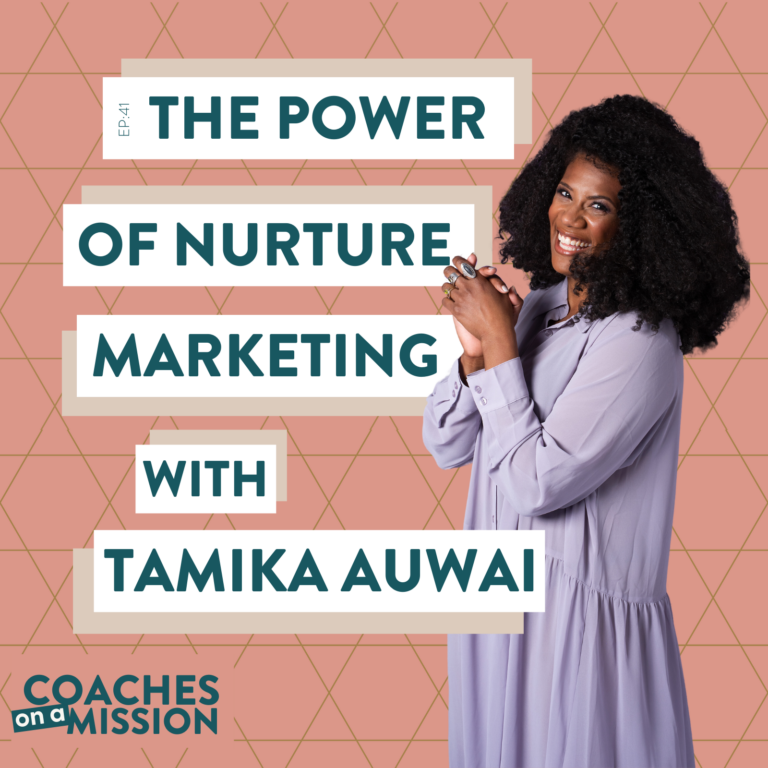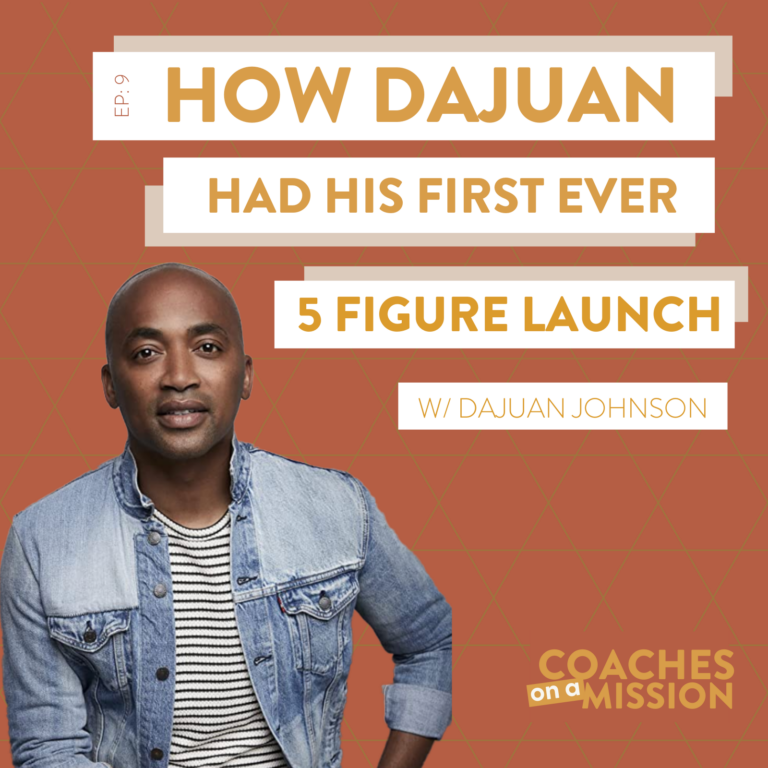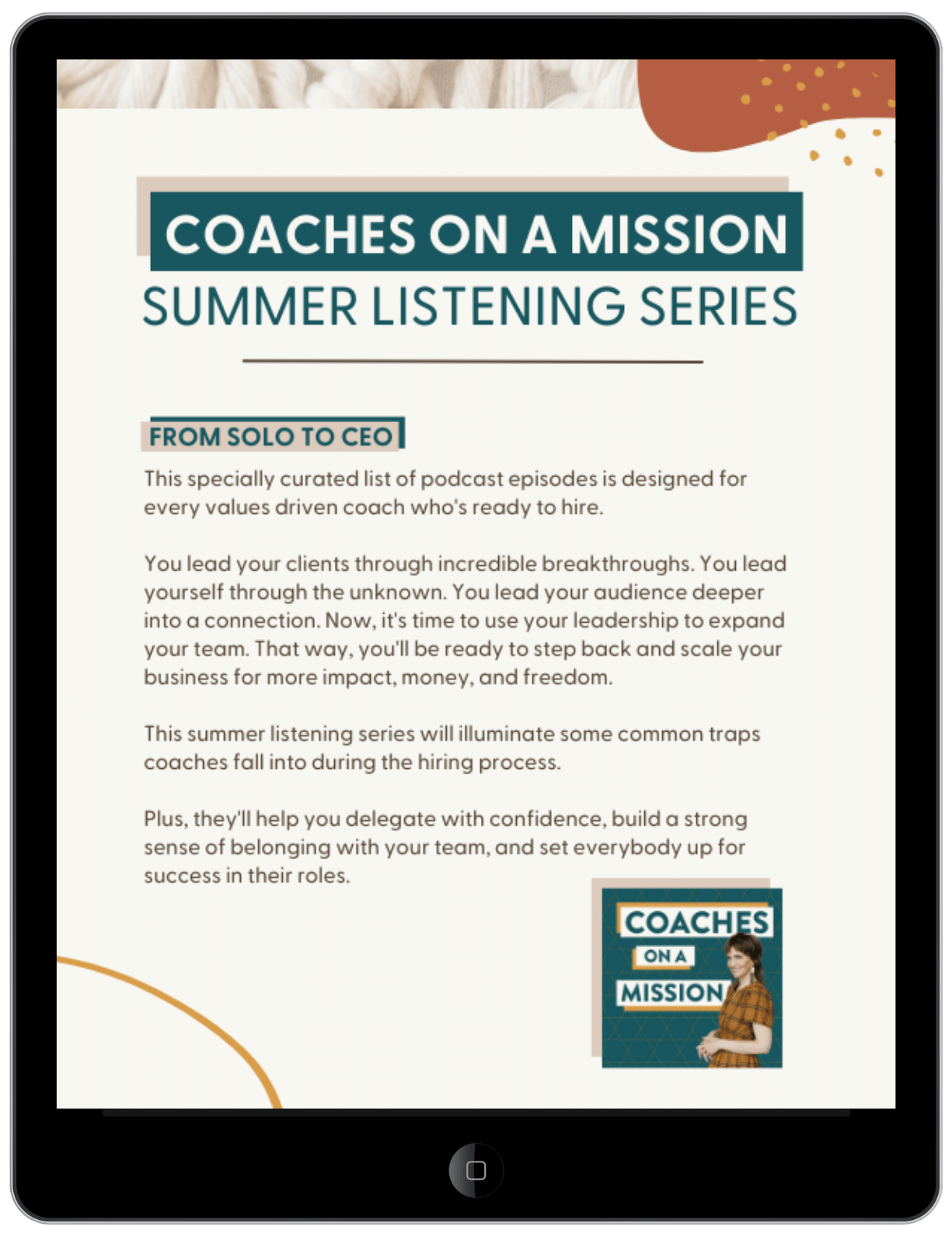The Power Of A Pre-Launch
I’ve always loved the idea of getting people hyped before a big reveal, and that’s exactly what a pre-launch does. Think of it as the time before your actual launch when you get people ready and excited. It’s like giving them a heads-up that something awesome’s coming. For me, about six weeks is ideal, but it depends on what you’re launching. If you’re selling something small, maybe you don’t need that long.
Let’s say I’m launching The Hive with a webinar. About six weeks before the big launch window, I start teasing it. I’m planting seeds about the problem that my program solves. This gets people talking and prepped mentally to learn more once doors open. My guest, Brenna McGowan is a pre-launch expert. She calls it setting the stage – not just talking about the problem, but also addressing any doubts or myths people might have so they feel ready.
Picture it like Black Friday back when it was just one intense day. People prepped ahead, knowing exactly what they wanted to buy. With a pre-launch, our audience shows up the same way – excited and ready to invest because being part of any launch should feel like an exciting event they don’t want to miss.
Anticipation Marketing: Key To A Stress-Free Launch
Brenna shared some major insights about using anticipation marketing effectively, which is part of any launch. Look at how Apple and the fashion industry get us excited about new products long before they’re available. Movies do it too with trailers months in advance.
In online business, we’re not tapping into this enough. Brenna explained how anticipation marketing can help us know our clients better and address objections, especially in today’s tight budget scenario. She used her own program, The Pre-Launch Plan, as an example. By building excitement early and offering deals to ready clients, she sold out her program in pre-launch.
The main takeaways? Give yourself and your clients time – what she calls spaciousness. It takes the pressure off the sales process and allows clients to make informed decisions. Anticipation marketing is not just another trick. It’s about really understanding your ideal client and creating an empathetic environment where they feel comfortable and excited to buy.
The Power Of Research
Before any launch, the essential step is a thorough voice of customer research. This means chatting on Zoom, using tools like Voxer for conversations, and sending out surveys. By understanding our audience deeply, your messaging aligns, making it easier to connect with the right people.
Even if you’re new and have little data, start small. Test your emails and social media posts for reactions. Marketing is about experimenting and noticing what works. Sometimes, engagement isn’t visible, but consistent effort counts. Even quiet times are easier to navigate when you know you’ve done the groundwork, ensuring your strategy and messaging are on point.
Setting Up Pre-Launch Success
When you’re new, don’t overwhelm yourself. Do fewer new things at a time so you can see what works and what doesn’t. Tracking results is key. Even if you post on Instagram once a week, notice what people respond to.
A solid pre-launch begins about six weeks out. This gives you the spaciousness to know your audience and lets your buyers make informed decisions. It’s a great time to tell meaningful stories and build personal connections. Sharing your “why” and values helps people stick with you, easing the pressure when you finally launch.
By pre-building trust, you don’t have to cram everything into the launch itself. You’ve already made connections and built trust, making the sales part smoother. Building trust ahead of time is crucial, especially as people get busier.
Key Strategies For Pre-Launch Success
Let’s talk about some clear, actionable steps for a successful pre-launch. One vital part of any launch is anticipation marketing, which I call narrating and seeding.
First things first, during a pre-launch, I use a method called the double CTA. It’s a bit unconventional but super effective. For example, in an email, I might explain a pain point and then ask readers to reply with their experiences. A PostScript (PS) at the end can hint at my upcoming program or event.
Another strategy involves inviting personal interactions without the pressure of selling, like quick questions about the program. Engaging people this way builds a relationship and trust ahead of the actual launch. My favorite trick is sprinkling in social proof – stories and results from previous clients – right into my content. This subtly shows my expertise and builds trust.
Seeding throughout my communications means planting little hints about the offer coming up. By the time I invite them to join, they’re eager and excited, making the transition seamless.
These techniques turn the launch process into a relaxed and trust-filled experience for everyone involved.
Why Pre-Launch?
Ever had a launch flop because something went wrong last minute? Brenna shared a story about a time her webinar failed due to a power outage. Luckily, her pre-launch work saved the day. This approach takes the pressure off the launch, creating space and confidence.
I can relate. During a Hive launch, 90% of joiners mentioned they’d been waiting. The pre-launch helped us hit our goal and boosted confidence and social proof. People saw others already in, which encouraged more sign-ups.
Brenna adds that even if your doors are always open, having specific enrollment periods helps. It gives people a nudge to join. Start nudging early, let them know what’s coming, and by launch time, they’re ready. Reminder: launch more frequently than every three years!
Mastering Pre-Launch Marketing
To make your pre-launch content part of any launch success, you’ll need to focus on a few key areas. First, use anticipation marketing to address objections to buying and provide social proof. Also, telling stories builds trust and affinity with your audience.
Show empathy and make people feel seen instead of bombarding them with too much “how-to” info. It’s important to demonstrate your authority and not shy away from your expertise. Highlight your results and how you’ve helped others. This builds credibility and offsets any nervousness about stepping into your role as an expert.
Let your personality shine and share personal stories. These connections can make your audience feel more connected and inclined to buy from you. Blend these tactics to guide people through objections, show them what’s possible, and future-pace them to see the benefits.
Strategic Pre-Launch Content: A Game Changer
We talked about the importance of addressing concerns in pre-launch content. If someone’s worried about time, show them a step-by-step system that’s quicker because it uses their customers’ feedback. It avoids the blank screen struggle by guiding them on exactly what to say. For those questioning if it’s worth it, share success stories, like how Emily Reagan had a six-figure launch after using these methods. It’s crucial to use case studies and social proof, even if they’re from your own experiences.
Creating content strategically is a core part of any launch. You’re putting stuff out there anyway, so do it pre-launch style for better results. Address concerns by sharing client stories, even your own. Coaches often are their own best case studies due to their journeys.
If the “ghosts of failed courses past” haunt you, tell folks they can succeed with the right foundation. Even if they’re just starting, they can gather audience insight through “spark interviews” to collect client language. It’s simpler to gather data early on, so ask potential clients or colleagues questions to compile valuable insights.
Avoid Common Pre-Launch Mistakes
Let’s dive into the biggest mistakes coaches make that stop them from pre-launching properly. First, they become so focused on the launch that the pre-launch phase gets ignored. Second, they don’t plan far enough in advance. If you’re starting six weeks before doors open, you need to think even earlier – like two to three months ahead.
One crucial aspect is to sit down with a calendar and really plan out the dates, emails, and assets needed. Most people set a launch date but fail to backtrack and schedule the pre-launch activities thoroughly.
For coaches without traditional launches, think of it as doing a “client push” at the end of every quarter. Start planning in January for a push in March, and then repeat the cycle quarterly. This approach helps avoid the scramble to find new clients when one leaves. Even with smaller offers like VIP days or one-on-one services, builds a natural cadence and can lead to an easier sales process over time.
A consistent pre-launch strategy can help fill your spots seamlessly, creating a waitlist, and taking the pressure off constantly selling. This mindset shift can make a big difference for those who don’t have a scaled program yet and are focusing on smaller groups or one-on-one coaching.
The Importance Of Pre-Launching
Having a waitlist can ease the pressure of finding new clients. This is part of any launch strategy, giving you a steady flow of interested clients. As someone who sometimes buys her own clients’ programs, Brenna emphasizes the value of effective pre-launch tactics.
She started her business at 40 without social media or video experience. Her key takeaway? Don’t let self-doubt stop you. Pre-launch is a visibility push. Believe in yourself and the value you bring. People need to hear what you have to offer.
This episode highlights the importance of consistent pre-launch efforts, building a waitlist, and pushing past self-doubt to help others.


